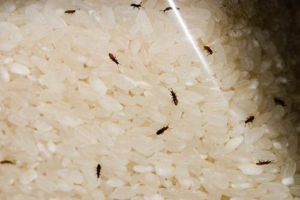
Introduction
Weevils can be a nuisance when they infest beans and rice, causing not only food waste but also concern. Fortunately, there are effective strategies to prevent and manage these pests. Here’s how to keep weevils out of your beans and rice.
Proper Storage
1. Use Airtight Containers
Store beans and rice in airtight containers to prevent weevils from accessing them. Glass jars, plastic bins with tight-fitting lids, or vacuum-sealed bags are excellent choices. Proper sealing keeps pests out and helps maintain the quality of your food.
2. Keep in a Cool, Dry Place
Weevils thrive in warm, humid environments. Store your beans and rice in a cool, dry place to deter these pests. A pantry with controlled temperature and low humidity is ideal.
Freezing for Prevention
3. Freeze Before Storage
To kill any potential weevils and their eggs, freeze beans and rice for at least 48 hours before storing them. This step helps eliminate any pests that might be present before you put the food away.
Regular Inspection
4. Check for Infestations
Regularly inspect your stored beans and rice for signs of weevil infestation. Look for small holes, webbing, or live insects. Early detection allows you to address problems before they spread.
Clean Storage Areas
5. Maintain Cleanliness
Keep your storage area clean and free of food debris. Weevils are attracted to spilled food and crumbs, so regular cleaning reduces the risk of infestation.
Natural Repellents
6. Use Bay Leaves
Bay leaves can act as a natural repellent against weevils. Place a few dried bay leaves in your containers of beans and rice. Their scent can help deter pests.
Handling Infestations
7. Dispose of Infested Items
If you discover an infestation, dispose of the affected beans and rice promptly. Clean the storage area thoroughly before introducing new food items to prevent the pests from spreading.
Conclusion
Keeping weevils out of your beans and rice involves proper storage, regular inspection, and preventive measures. By following these steps, you can protect your food from pests and ensure its quality and safety. Implement these strategies to enjoy your beans and rice without the worry of weevils.